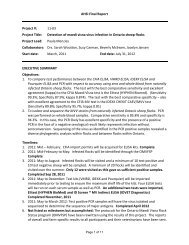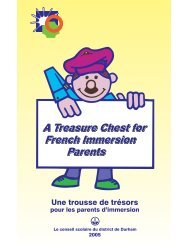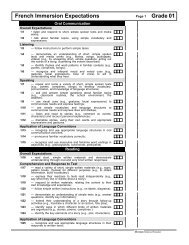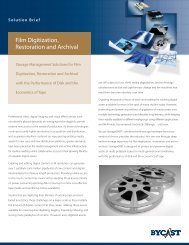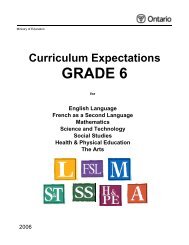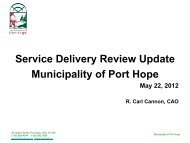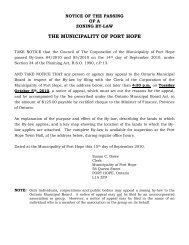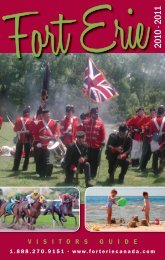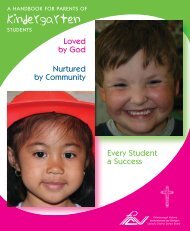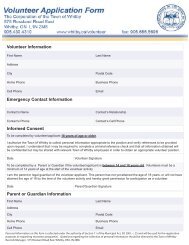GRADE 3 - PVNC Catholic District School Board
GRADE 3 - PVNC Catholic District School Board
GRADE 3 - PVNC Catholic District School Board
You also want an ePaper? Increase the reach of your titles
YUMPU automatically turns print PDFs into web optimized ePapers that Google loves.
English Language Expectations<br />
Pg. 4 Grade 3<br />
3e29<br />
3e30<br />
Demonstrating Understanding<br />
1.4 demonstrate understanding of a variety of texts by identifying important ideas and some supporting<br />
details (e.g., restate important ideas and some related details from an informational text about<br />
early settlers; retell a story giving details about specific elements of the text such as setting,<br />
characters, and theme)<br />
Making Inferences/Interpreting Texts<br />
1.5 make inferences about texts using stated and implied ideas from the texts as evidence<br />
Teacher prompts: “Using information from the story opening, what can you infer about the outcome<br />
of the game?” “How do you think the other characters will react to the actions of the main<br />
character?” “Why do you think early settlers chose wood to build their homes? Is there any evidence<br />
in the text to explain this?”<br />
3e31<br />
3e32<br />
3e33<br />
Extending Understanding<br />
1.6 extend understanding of texts by connecting the ideas in them to their own knowledge and<br />
experience, to other familiar texts, and to the world around them<br />
Teacher prompts: “How are homes in this book the same as or different from homes today?” “Do you<br />
know of other reasons why trees are important besides the reasons mentioned in the book?”<br />
Analysing Texts<br />
1.7 identify specific elements of texts and explain how they contribute to the meaning of the texts<br />
(e.g., narrative: setting, characters, plot, theme; explanation of a procedure: procedure to be<br />
explained, sequence of steps)<br />
Teacher prompts: “In what way does knowing more about the characters help you to understand the<br />
text?” “How does identifying the setting in the text help you as a reader?” “Why is it important to<br />
have the steps in a specific sequence?”<br />
Responding to and Evaluating Texts<br />
1.8 express personal opinions about ideas presented in texts (e.g., identify traits they admire in the<br />
characters; comment on actions taken by characters) Teacher prompts: “Do any of the characters<br />
in this story remind you of someone you know?” “What do you think about the way this story ends?”<br />
3e34<br />
Point of View<br />
1.9 identify the point of view presented in a text and suggest some possible alternative perspectives<br />
(e.g., retell the story from the point of view of someone other than the author)<br />
Teacher prompts: “How does the author show his/her point of view on this poster?” “How might the<br />
story have been different if the main character had been a girl instead of a boy or a senior instead of<br />
a child?”<br />
2. Understanding Form and Style<br />
3e35<br />
3e36<br />
Text Forms<br />
2.1 identify and describe the characteristics of a variety of text forms, with a focus on literary texts<br />
such as a fable or adventure story (e.g., plot development, characters, setting), graphic texts such<br />
as a comic book (e.g., speech bubbles, illustrations, captions), and informational texts such as a<br />
nature magazine (e.g., table of contents, diagrams, photographs, labels, captions)<br />
Text Patterns<br />
2.2 recognize a few organizational patterns in texts of different types, and explain how the patterns<br />
help readers understand the texts (e.g., classification/grouping of ideas in a report or a factual<br />
recount) Teacher prompt: “How does this pattern help you understand the text?”<br />
Ministry of Education 2006



